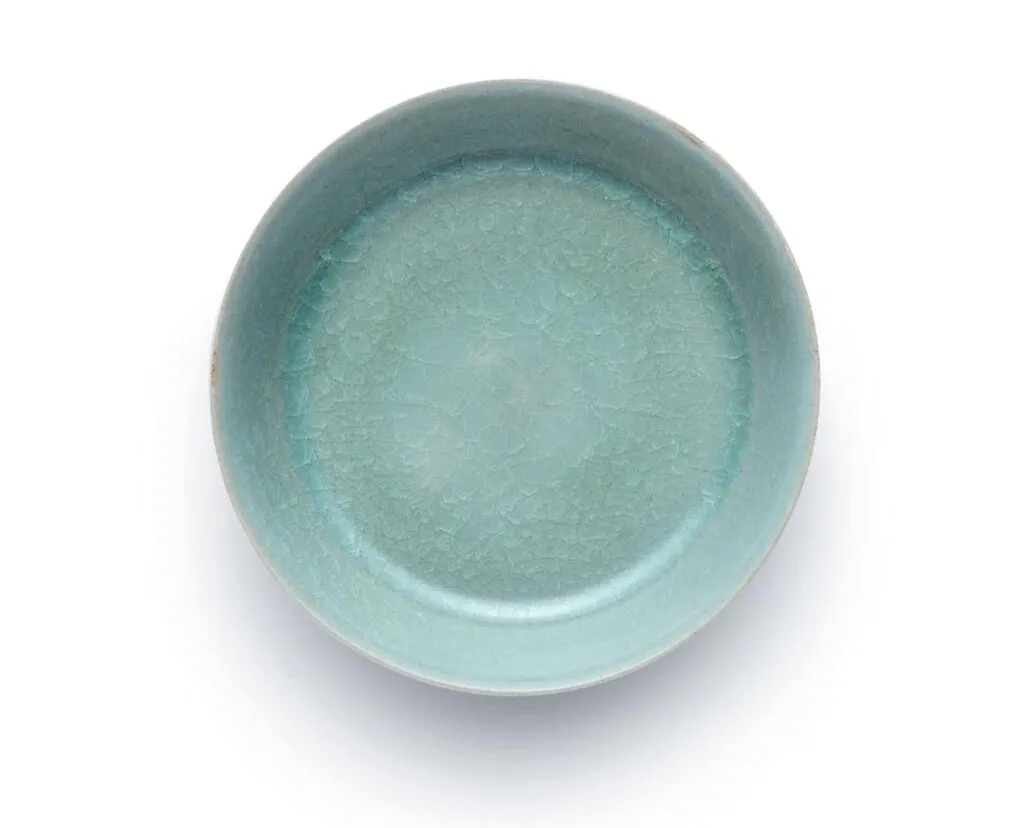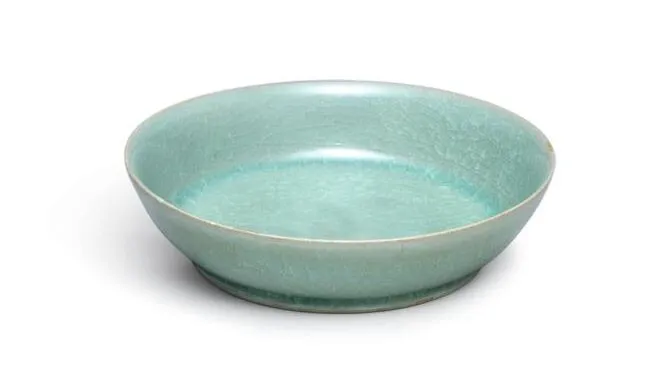The enduring appeal of Imperial ceramics
One day in early October 2017, a hush fell over the Sotheby’s Hong Kong auction room as lot 5, a Ru guanyao brush washer from the Le Cong Tang Collection, came up for sale. The small, understated bowl, at least 900 years old, glinted softly from screens dotted around the room. Poetically simple in its rounded shallow form and clad with a typical blue-green ‘ice crackle’ glaze, a colour said to be approaching the ‘blue of the sky after the rain’ according to the 17th-century Chinese artist Gao Shiqi.
There was no estimate, just an expectation that this incredibly rare Chinese ceramic, one of only 87 known pieces of Ru ware in the world, and one of four Ru vessels in private hands, would fetch a price befitting its starry status. ‘The sale of the brush washer took over 20 minutes, there was activity in the salesroom, but eventually it was down to two clients bidding against each other over the phones,’ says Robert Bradlow, who runs Sotheby’s Chinese works of art department in London. In his 25-year career, he has only handled five Ru ware pieces.
When the hammer finally came down at £28.2m, the Sotheby’s team was ecstatic to have achieved a new world auction record for a Chinese ceramic. The little brush washer, just 13cm in diameter, is an amazing survivor of the Song (pronounced Sung) Dynasty period, comprising both Northern and Southern Song Dynasties, which controlled eastern China from AD960 to 1279.

Scholars used such bowls to rinse their brushes in as they worked on calligraphic scrolls and paintings, and this example was made between 1086 and 1106, under the rule of the Northern Song, during the very short period that the Ru kiln was active. ‘The Ru kiln was the finest of the ‘Five Great Kilns’ of the period – including the Jun, Guan, Ding and Ge Kilns, which made ceramics for official [guanyao in Chinese] use at the Song court,’ explains Robert Bradlow.
You might also like how to decorate with blue and white china
During the time of the Northern Song Dynasty from AD960 to 1127, society shifted from being ruled by hereditary aristocrats to being governed by a central bureaucracy of scholar-officials. ‘The humble look of Ru ware, the simplicity of form, glaze and colour reflects a specific aesthetic of the time prized by the scholars who expressed themselves through painting and calligraphy,’ says Bradlow. ‘If you look at these pieces today, they are the precursors to the modern ceramic aesthetic championed by potters such as Bernard Leach and Shoji Hamada in the early 20th century.’
From the early 1980s, the brush washer was owned by the Hongxi Museum in Taiwan, but in 2000, amidst a financial crisis, it was sold to wealthy Taipei-based businessman Cao Xingcheng, along with some other Song Dynasty ceramics, to augment his magnificent collection of Chinese pottery, built up over decades. Xingcheng consigned the brush washer, along with 14 other ancient Chinese ceramics, to Sotheby’s. ‘You have to appreciate Song porcelain from a perspective of Zen Buddhism, which became a mainstream religion in the Song Dynasty. Zen is about simplicity in life and Ru wares are all minimalist aesthetic,’ he said in a recent interview.

John Axford, the Antiques Roadshow’s Asian expert, was also in the Sotheby’s salesroom to witness the selling of this legendary piece. Was it a thing of beauty? ‘Well, beauty is in the eye of the beholder,’ he replies, diplomatically. ‘What I can say is that it is an extremely rare and important cultural object, hence its high value. The Chinese have always admired materials such as jade and clay, and the Song Dynasty was a golden period for the arts, including ceramics.’
You might also like create displays with fruit and vegetable ceramics
He adds that in the 1720s, the Yongzheng Emperor commissioned 24 painted scrolls to record all the Imperial Chinese treasures. Only two of them survive, one in The British Museum and the other in the Victoria and Albert Museum. ‘Song Dynasty ceramics are recorded in these scrolls, because they have always been prized by the Chinese elite,’ says Axford.
In 1937, the great English collector of Chinese ceramics, Sir Percival David, whose collection is now in the British Museum, said that Ru wares remain, ‘…in the words of the Emperor, “rare as stars at dawn”’. Aptly poetic for a bowl that has witnessed nearly 1,000 years of history.
